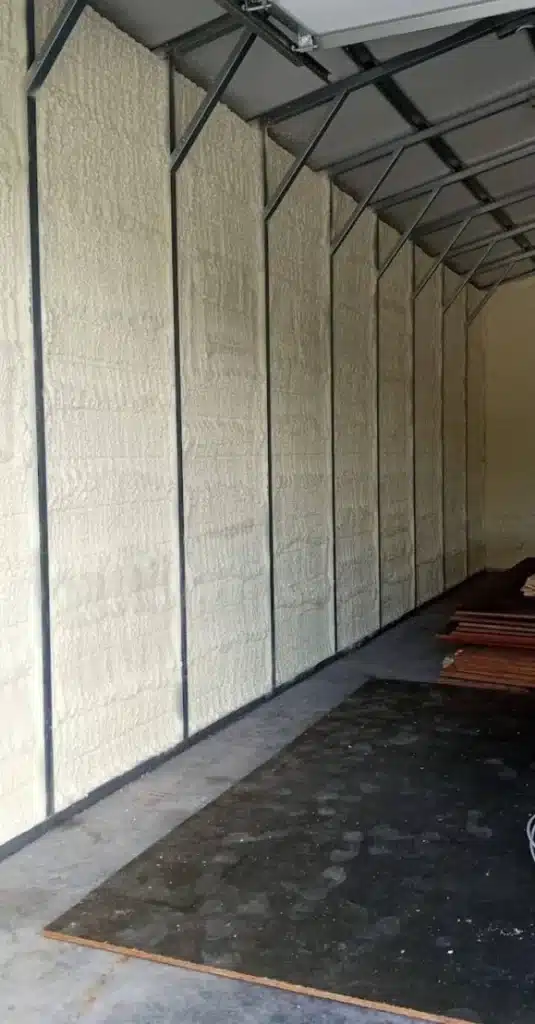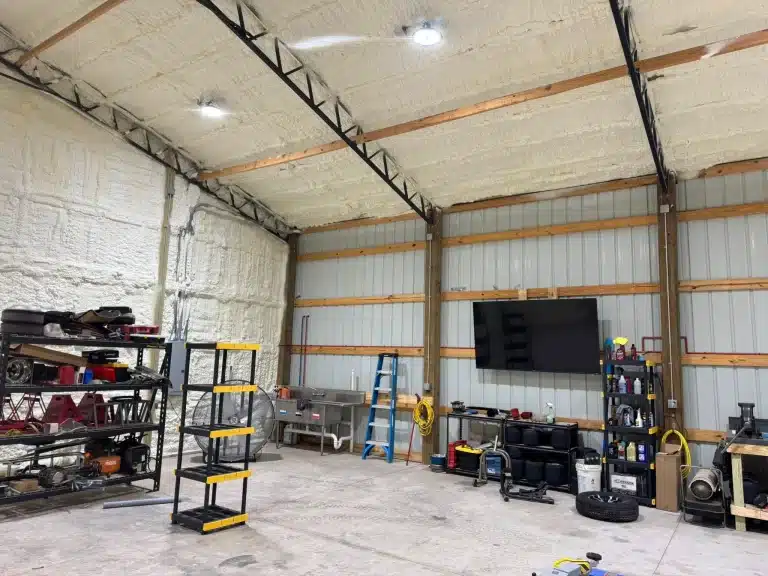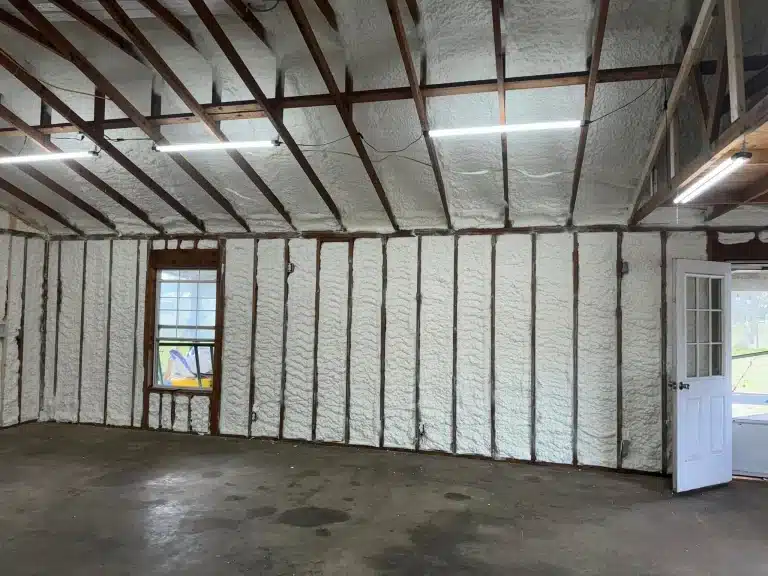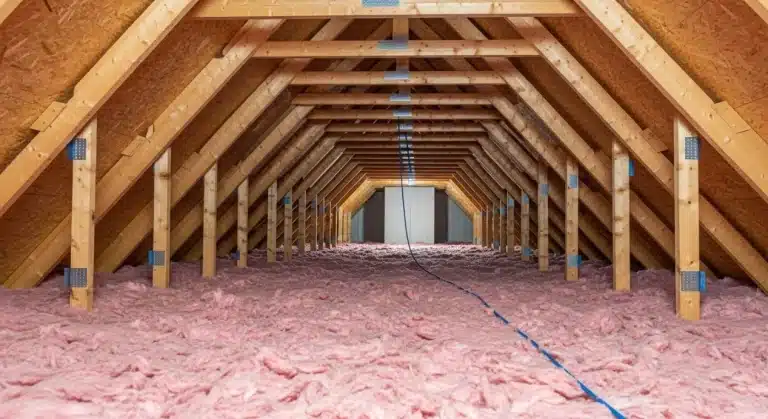A home that feels stable and secure maintains predictable conditions regardless of the weather outside. Proper insulation achieves this by creating a robust, continuous thermal and air barrier, effectively decoupling the interior environment from exterior extremes. This process minimizes the stress on the building’s structure and its mechanical systems, leading to consistent comfort, predictable energy costs, and reliable protection from environmental hazards like moisture damage and noise intrusion.
Deep knowledge of building science shows that a comprehensive insulation strategy is less about adding material and more about managing the flow of heat, air, and moisture. When these elements are controlled, the structure becomes more resilient. The result is a home that doesn’t just feel more comfortable; it operates with an underlying stability that provides true, lasting peace of mind.
Thermal Consistency as a Foundation of Stability
Thermal stability is the core benefit that translates directly into a feeling of security. When insulation is inadequate, a home’s interior temperature constantly fights the outside conditions, leading to noticeable temperature swings and “hot” or “cold” spots. Proper insulation stabilizes the thermal envelope, meaning the indoor temperature is less reactive to outdoor temperature changes.
For example, on a 90°F summer day, a well-insulated attic acts as a powerful thermal buffer. The heat radiating off the roof’s surface is significantly slowed down, preventing the ceiling below from becoming an indoor heat source. The ENERGY STAR program, which is part of the US Department of Energy, points out that air sealing and adding insulation in areas like attics and floors can save homeowners an average of 15% on heating and cooling costs, or about 11% on total energy costs. This reduction in energy consumption is a direct measure of the stability insulation provided the heating and cooling system runs less often and works less hard to maintain the target temperature, making utility bills more predictable.
Bonus Tip: The Power of Continuous Insulation
When evaluating wall assemblies, consider using an exterior layer of continuous rigid foam insulation. This technique significantly reduces “thermal bridging,” which is the heat loss that occurs through structural components like wood studs. Since wood has a lower R-value than most insulation, these thermal bridges create cold streaks inside walls, diminishing the overall performance of the barrier. Eliminating this weakness contributes significantly to the consistency and stability of the home’s temperature.
Structural Longevity and Moisture Defense
A significant, often hidden, threat to a home’s security is moisture accumulation. The connection between proper insulation and structural integrity is undeniable. When warm, conditioned indoor air meets a cold surface, condensation forms, and this moisture is the breeding ground for structural decay.
The US Environmental Protection Agency (EPA) notes that mold thrives in damp, dark environments, and inadequate insulation is a primary cause. When insulation is missing or ineffective, the temperature difference across the wall assembly is too great, allowing water vapor in the air to condense inside the wall cavities or on the ceiling. This hidden moisture can soak materials like fiberglass or cellulose, causing them to sag and lose their insulating properties further. Over time, this leads to:
- Rot and Decay: Moisture accelerates the decay of wooden structural elements.
- Mold Growth: Mold spores damage property and pose health risks, particularly for those with respiratory conditions.
- Ice Dams: In cold climates, heat escaping through a poorly insulated attic melts roof snow, which then refreezes at the cold eaves, creating ice dams that force water back under shingles and into the home.
The correct type and placement of insulation, especially air-impermeable options like closed-cell spray foam, acts as a primary defense by managing the air-moisture relationship. The insulation keeps interior surfaces warm, preventing the dew point from being reached within the wall cavity.
The Barrier Against Outside Noise and Elements
Security is not only physical but also experiential. A quiet home, shielded from the constant agitation of traffic, lawnmowers, and neighbor activity, feels calmer and more protected. Insulation materials are not just thermal blockers; they are also sound dampeners.
A wall assembly’s capacity to reduce noise is measured using the Weighted Sound Reduction Index Rw, which is a laboratory-tested figure for airborne sound insulation. While traditional insulation materials are not pure soundproofing, they significantly reduce the transmission of external noise. Dense-pack cellulose and open-cell spray foam are particularly effective because they fill the entire cavity, eliminating the air gaps and pathways sound uses to travel. An analysis of sound transmission indicates that controlling air movement is paramount, as a small 1% gap in the wall surface can result in a 10% loss in sound-blocking performance.
Bonus Tip: The Air Barrier is Key to Sound
The performance of insulation in blocking sound depends heavily on air sealing. When addressing noise, the first step is always to stop the air leaks, because air is the primary medium for sound travel. A material that provides a complete air seal, like spray foam, will also offer superior acoustic control over one that is simply packed into a cavity.
[Image: Diagram showing a cross-section of a well-insulated wall with a continuous air barrier and thermal barrier.]
Comparing High-Performance Insulation Materials
The choice of insulation material affects both the thermal performance ($R$-Value) and the degree of air sealing, which together dictate the home’s overall stability. A material that offers high air-sealing properties generally provides a greater feeling of security against air, moisture, and sound intrusion.
| Insulation Material | R-Value per Inch (Approx.) | Air Sealing Effectiveness | Moisture Resistance (Inherent) | Primary Application Areas |
|---|---|---|---|---|
| Closed-Cell Spray Foam | 6.5 – 7.0 | Excellent (Air and Vapor Barrier) | High | Walls, Ceilings, Crawl Spaces, Anywhere structural integrity is a factor |
| Open-Cell Spray Foam | 3.5 – 3.8 | Excellent (Air Barrier Only) | Low (Absorbs Water) | Interior Walls, Attics (where moisture control is via ventilation) |
| Dense-Pack Cellulose | 3.2 – 3.8 | Good (Requires Air Sealing) | Medium (Absorbs/Releases Moisture) | Existing Walls (via drill-and-fill), Attics |
| Fiberglass Batts | 2.9 – 3.8 | Poor (Requires Supplemental Air Sealing) | Low (Loses R-Value When Wet) | New Construction Walls, Attics (when properly fitted) |
The highest-performing and most stable homes almost always rely on an insulation choice that also acts as a powerful air seal. Closed-cell spray foam, for example, achieves a superior R-value while simultaneously creating a monolithic air and vapor barrier.

Things to Consider Before Making a Decision
Before making a final choice, it pays to consider the specific factors unique to the property. Applying a one-size-fits-all approach to insulation often results in a compromise of stability and long-term performance.
Climate and R-Value Targets
R-Value, which measures resistance to heat flow, should always align with the region’s climate zone, as specified by the US Department of Energy. Homes in northern, colder zones require a significantly higher R-Value than those in southern, warmer zones. Failing to meet the minimum recommended $R$-Value for the region will compromise the goal of a stable, secure temperature and lead to ongoing energy issues.
Air Sealing is the Priority
Before adding any insulation, air sealing must be the first consideration. Air leaks often account for a significant portion of a home’s energy loss, making the expensive insulation materials less effective. Finding and sealing air pathways around plumbing, electrical penetrations, vents, and attic hatches dramatically improves the overall thermal performance, and this step should always precede or accompany the insulation install.
Long-Term Value and ROI
Insulation is one of the most cost-effective home improvement projects with one of the highest returns on investment. A report cited by the Insulation Institute showed that adding fiberglass attic insulation had a 117% return on investment in terms of increased home value. This figure doesn’t even account for the ongoing monthly energy savings, suggesting the initial investment pays for itself quickly, offering financial security alongside thermal comfort.
Bonus Tip: Watch for Unconditioned Spaces
Never neglect the unconditioned areas of the house. Insulating the rim joists in a basement or crawlspace is often a high-impact, low-cost project that can drastically improve the comfort of the floor above. These areas are major entry points for cold air, moisture, and pests, all of which compromise the security of the home’s lower levels.
Getting Answers to Common Insulation Project Questions
Making a home more stable and secure begins with asking the right questions about the building’s thermal performance. Focus on a thorough evaluation of the existing structure and a plan that addresses all forms of energy transfer—conduction, convection, and radiation. A successful insulation project moves beyond simply slowing heat flow and toward a holistic strategy for environmental control.
Moving Toward a More Secure Home
The link between proper insulation and a home’s feeling of stability and security is clear: controlled temperatures lead to comfort; controlled moisture protects the structure; and controlled sound contributes to peace. A deep, professional understanding of building dynamics is essential to achieving these outcomes. This work involves evaluating the existing environment, specifying materials based on performance characteristics like R-Value and air-sealing capability, and executing a complete thermal and air barrier strategy.
Next Steps for Evaluating Your Home’s Thermal Health
Taking the next steps to secure a home’s thermal health requires an experienced and authoritative partner. For an evaluation of your home’s thermal envelope and a detailed plan to enhance its stability and long-term security, reach out to Prestige Insulation Solutions LLC. Expert contractors can identify the unique weaknesses in your home and recommend a customized insulation strategy. Contact the team directly at (850) 429-4969 or send an email to [email protected] for professional guidance.
Sources
- ENERGY STAR – Information from the US Department of Energy on estimated energy savings through air sealing and adding insulation, corroborating data with professional field experience.
- US Environmental Protection Agency (EPA) – Information on mold, mildew, and health risks associated with damp environments, and the role of moisture control in preventing them.
- Insulation Institute – Report statistics on the high return on investment (ROI) and value added to homes by installing attic insulation, based on Remodeling Magazine data.
Frequently Requested Information on Home Stability
Which home areas are most important to insulate?
The attic and the crawl space or basement rim joists are the most critical areas to address first. Heat rises, making the attic the site of the greatest heat loss in the winter and heat gain in the summer. Conversely, the rim joists and crawl spaces are the primary entry points for cold air and moisture that affect the stability of the entire house.
How does air sealing differ from insulation?
Air sealing addresses convective heat transfer—the movement of air through cracks and gaps. Insulation addresses conductive heat transfer—the flow of heat through materials. An air barrier stops air movement; a thermal barrier slows heat flow. You must have both for a truly stable and energy-efficient home.
Does insulation ever need to be replaced?
Most insulation, particularly fiberglass and modern foam products, has a very long life, often 50-100 years or more. However, it must be replaced if it gets wet (especially cellulose), becomes damaged by pests, or settles and compresses, causing a significant loss of R-Value.
How is R-value calculated for a whole wall assembly?
The whole-wall R-Value is calculated by considering the R-Value of the insulation and the framing materials (like wood studs), as well as the external sheathing and interior drywall. Because wood framing reduces the effective R-Value, the total assembly R-Value is often significantly lower than the stated R-Value of the insulation material alone.
What is the most common mistake made in insulation projects?
The most common mistake is overlooking the importance of air sealing before or during the insulation process. Installing high R-Value insulation without first sealing air leaks is like trying to fill a bathtub without plugging the drain; the heat will escape via air movement regardless of the thickness of the insulation material.






